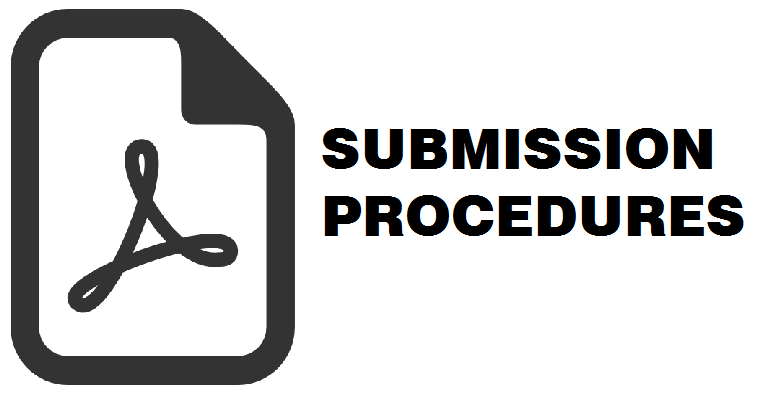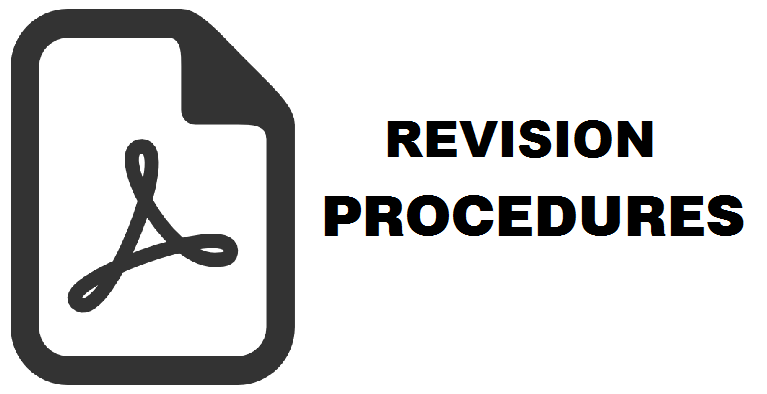Rice Fields Suitability Zonation in North Penajam Paser Regency Using Multicriteria-Based Simple Additive Weighting (SAW) and GIS
Lely Fitriana(1), Sahid Susanto(2), Sigit Supadmo(3), Ngadisih Ngadisih(4*), Chandra Setyawan(5), Khoiru Zaki(6)
(1) Student of Doctoral Program in Agricultural and Biosystems Engineering, Universitas Gadjah Mada, Yogyakarta, Indonesia
(2) Department of Agricultural and Biosystems Engineering, Universitas Gadjah Mada, Yogyakarta, Indonesia
(3) Department of Agricultural and Biosystems Engineering, Universitas Gadjah Mada, Yogyakarta, Indonesia
(4) Department of Agricultural and Biosystems Engineering, Universitas Gadjah Mada, Yogyakarta, Indonesia
(5) Department of Agricultural and Biosystems Engineering, Universitas Gadjah Mada, Yogyakarta, Indonesia
(6) Department of Agricultural and Biosystems Engineering, Universitas Gadjah Mada, Yogyakarta, Indonesia
(*) Corresponding Author
Abstract
The East Kalimantan Provincial Government has designated North Penajam Paser Regency as one of rice food supports for the National Capital City (IKN) of the Archipelago. This decision is based the domestic production which met and even exceeded demand in 2020. One step to support rice production is to identify land with the greatest potential for cultivation. Therefore, this study aimed to analyze land suitability zonation for rice production using the criteria of climate, topography, and soil properties, as well as infrastructure. Land suitability was evaluated using simple additive weighting (SAW), multicriteria, and GIS methods taking into account the factors of drainage, soil depth, texture, type, rainfall, temperature, slope, distance from road, distance from river, and land use land cover. Suitability zonation (classes) were arranged based on land suitability classification outlined by the Food and Agriculture Organization (FAO, 1976) in Minister of Agriculture Regulation No. 79 of 2013, namely Very Suitable (S1), Moderately Suitable (S2), Marginally Suitable (S3), Not Suitable (N1). The results showed that the areas classified as highly, moderately, marginally, and not suitable were 4,960 ha (3.1%), 103,738 ha (65.5%), 44,889 ha (28.4%), and 4,708 ha (3.0 %) respectively.
Received:2024-02-01 Revised:2024-09-26 Accepted:2025-03-11 Published: 2025-04-27
Keywords
Full Text:
PDFReferences
Adrian, Widiatmaka, Munibah, K., & Firmansyah, I. (2022). Evaluate land suitability analysis for rice cultivation using a GIS-based AHP multi-criteria decision-making approach: Majalengka Regency, West Java Province. IOP Conference Series: Earth and Environmental Science, 1109(1). https://doi.org/10.1088/1755-1315/1109/1/012062
Al-Hanbali, A., Shibuta, K., Alsaaideh, B., & Tawara, Y. (2022). Analysis of the land suitability for paddy fields in Tanzania using a GIS-based analytical hierarchy process. Geo-Spatial Information Science, 25(2), 212–228. https://doi.org/10.1080/10095020.2021.2004079
Ayehu, S. A. (2015). Land Suitability Analysis for Rice Production: A GIS Based Multi-Criteria Decision Approach. American Journal of Geographic Information System, 4(3), 95–104. https://doi.org/10.5923/j.ajgis.20150403.02
Fahmi, D., Sahid, B., Fitriana, L., Khoiru, M., Setyawan, C., & Ngadisih, N. (2023). Aplikasi Sistem Informasi Geografis Untuk Analisis Potensi Sumberdaya Lahan Pertanian Padi Di Kabupaten Paser Sebagai Daerah Pendukung Ibukota Kota Nusantara. 320–325.
Fauziah, N., Munazilin, A., & Santoso, F. (2024). Rancang Bangun Sistem Pengontrol Irigasi Otomatis Menggunakan Mikrokontroller Arduino Uno. G-Tech: Jurnal Teknologi Terapan, 8(3), 1464–1473. https://doi.org/10.33379/gtech.v8i3.4343
FAO. (1976). A Framework For Land Evaluation, Publication Division, Food and Agriculture Organization, Via delle Terme Caracalla, Rome, Italy.
Fitriana L, Susanto S, Arief S., S., Ngadisih, Zaki M. K, Setyawan S. (2024) Pendekatan Komprehensif Kesesuaian Lahan Budidaya Tanaman Padi Sawah di Kabupaten Paser, Provinsi Kalimantan Timur. Jurnal Ilmiah Rekayasa Pertanian dan Biosistem, 12(2), 330-340
Harini R., Susilo B. Nujani E. (2015). Geographic Information System-Based Spatial Analysis of Agricultural Land Suitability in Jogjakarta. Indonesian Journal of Geography.Vol 47 No. 2 December 2015 (171-179)
Jamil, M., Sahana, M., & Sajjad, H. (2018). Crop Suitability Analysis in the Bijnor District, UP, Using Geospatial Tools and Fuzzy Analytical Hierarchy Process. Agricultural Research, 7(4), 506–522. https://doi. org/10.1007/s40003-018-0335-5
Kusnadi, H., Desayati, Fauzi, E., Ishak, A., Firizon, J., & Putra, W. E. (2022). Produktivitas Padi Di Lahan Rawa Dengan Kapur Dolomit.
Jurnal Pertanian, 13(2), 47–53. https://doi.org/10.30997/jp.v13i2.5548
Li, Y., Shao, X., Guan, W., Ren, L., Liu, J., Wang, J., & Wu, Q. (2016). Nitrogen-decreasing and yield-increasing effects of combined applications of organic and inorganic fertilizers under controlled irrigation in a paddy field. Polish Journal of Environmental Studies, 25(2), 673–680. https://doi.org/10.15244/pjoes/61530
Maroneze, M. M., Zepka, L. Q., Vieira, J. G., Queiroz, M. I., & Jacob-Lopes, E. (2014). A tecnologia de remoção de fósforo: Gerenciamento do elemento em resíduos industriais. Revista Ambiente e Agua, 9(3), 445–458. https://doi.org/10.4136/1980-993X
Makungwe, M., Chabala, L. M., Van Dijk, M., Chishala, B. H., & Lark, R. M. (2021). Assessing land suitability for rainfed paddy rice production in Zambia. Geoderma Regional, 27(September), e00438. https://doi.org/10.1016/j.geodrs.2021.e00438
Moisa, M. B., Feyissa, M. E., Dejene, I. N., Tiye, F. S., Deribew, K. T., Roba, Z. R., Gurmessa, M. M., & Gemeda, D. O. (2023). Evaluation of land suitability for Moringa Oleifera tree cultivation by using Geospatial technology: The case of Dhidhessa Catchment, Abay Basin, Ethiopia. Oil Crop Science, 8(1), 45–55. https://doi.org/10.1016/j.ocsci.2023.02.007
Osei-Gyabaah, A. P., Antwi, M., Addo, S., & Osei, P. (2023). Land suitability analysis for cocoa (Theobroma cacao) production in the Sunyani municipality, Bono region, Ghana. Smart Agricultural Technology, 5(April), 100262. https://doi.org/10.1016/j.atech.2023.100262
Pertanian, K. (2017). www.setjen.pertanian.go.id.
Pramanik, M. K. (2016). Site suitability analysis for agricultural land use of Darjeeling district using AHP and GIS techniques. Modeling Earth Systems and Environment, 2(2), 1–22. https://doi.org/10.1007/s40808-016-0116-8
Pratiwi, F., Tinus Waruwu, F., Putro Utomo, D., & Syahputra, R. (2019). Penerapan Metode Aras Dalam Pemilihan Asisten Perkebunan Terbaik Pada PTPN V. Seminar Nasional Teknologi Komputer & Sains (SAINTEKS) SAINTEKS 2019, 651–662.
Subroto, G., & Susetyo, C. (2016). Identifikasi Variabel-Variabel yang Mempengaruhi Penentuan Lahan Pertanian Pangan Berkelanjutan di Kabupaten Jombang, Jawa Timur. Jurnal Teknik ITS, 5(2). https://doi.org/10.12962/j23373539.v5i2.18297
Hossain, M. I., Siwar, C., Mokhtar, M. Bin, Dey, M. M., Jaafar, A. H., & Alam, M. M. (2013). Water productivity for boro rice production: Study on floodplain Seels in Rajshahi, Bangladesh. Journal of Bio-Science, 21(2003), 123–136. https://doi.org/10.3329/jbs.v21i0.22526
Maroneze, M. M., Zepka, L. Q., Vieira, J. G., Queiroz, M. I., & Jacob-Lopes, E. (2014). A tecnologia de remoção de fósforo: Gerenciamento do elemento em resíduos industriais. Revista Ambiente e Agua, 9(3), 445–458. https://doi.org/10.4136/1980-993X
Supriatin, L. S. (2018). Penentuan musim tanam, jenis varietas, dan teknik budidaya tanaman padi terkait mitigasi metana (CH4) (Determination of Early Planting Season, Type Varieties, and Cultivation Techniques of Rice as Mitigation to Methane Emission). Jurnal Manusia Dan Lingkungan, 24(1), 1. https://doi.org/10.22146/jml.23077
Widiatmaka W., Ambarwulan W., Tambunan R., Nugroho Y, Suprajaka S., Nurwadjedi N., Santoso P. (2014). Land use planning of paddy field using geographic information system and land evaluationin west Lombok, Indonesia. Indonesian Journal of Geography. 2014. 46(1)89 DOI: 10.22146/ijg.5004
Widiatmaka, W., Ambarwulan, W., Setiawan, Y., & Walter, C. (2016). Assessing the Suitability and Availability of Land for Agriculture in Tuban Regency, East Java, Indonesia. Applied and Environmental Soil Science, 2016, 1–13. https://doi.org/10.1155/2016/7302148
Wubalem, A. (2023). Modelling of land suitability for surface irrigation using analytical hierarchy process method in Belesa District Northeastern Ethopia. Heliyon. 9 (2023) e1397 https://doi.org/101016/j.heliyon.2023.e13937..
Wulandari, S. R., Hamdani, H., & Septiarini, A. (2022). Sistem Pendukung Keputusan Kesesuaian Lahan Tanaman Padi Menggunakan Metode AHP dan SAW. JISKA (Jurnal Informatika Sunan Kalijaga), 7(3), 226–236. https://doi.org/10.14421/jiska.2022.7.3.226-236
Article Metrics
Refbacks
- There are currently no refbacks.
Copyright (c) 2025 Authors and Indonesian Journal of Geography

This work is licensed under a Creative Commons Attribution-NonCommercial 4.0 International License.
The Indonesian Journal of Geography (ISSN 2354-9114 (online), ISSN 0024-9521 (print)) is an international journal published by the Faculty of Geography, Universitas Gadjah Mada in collaboration with The Indonesian Geographers Association. The content of this website is licensed under a Creative Commons Attribution-ShareAlike 4.0 International License
Accredited Journal, Based on Decree of the Minister of Research, Technology and Higher Education, Republic of Indonesia Number 225/E/KPT/2022, Vol 54 No 1 the Year 2022 - Vol 58 No 2 the Year 2026 (accreditation certificate download)









